Indoor Environmental Quality Assessment and Occupant Satisfaction: A Post-Occupancy Evaluation of a UAE University Office Building
Abstract
1. Introduction
1.1. IEQ at the Workplace
1.2. IEQ Factors
1.3. IEQ Measurement Parameters and Thresholds
2. Methods and Materials
2.1. Case Study Building
2.2. IEQ Monitoring
2.3. User Satisfaction Questionnaire
3. Results and Analysis
3.1. IEQ Monitoring Data
3.1.1. Thermal Comfort
3.1.2. Indoor Air Quality
3.1.3. Lighting Quality
3.1.4. Acoustical Quality
3.2. Occupant Satisfaction Questionnaire Data
3.2.1. Thermal Comfort
3.2.2. Indoor Air Quality
3.2.3. Lighting Quality
3.2.4. Acoustical Quality
3.2.5. Health-Related Symptoms
4. Discussion
4.1. Thermal Comfort
4.2. Indoor Air Quality
4.3. Lighting Quality
4.4. Acoustical Quality
4.5. Limitations and Future Work
5. Conclusions
Author Contributions
Funding
Institutional Review Board Statement
Informed Consent Statement
Acknowledgments
Conflicts of Interest
Appendix A. QUESTIONNAIRE FOR OCCUPANTS—Indoor Air Quality (IAQ)
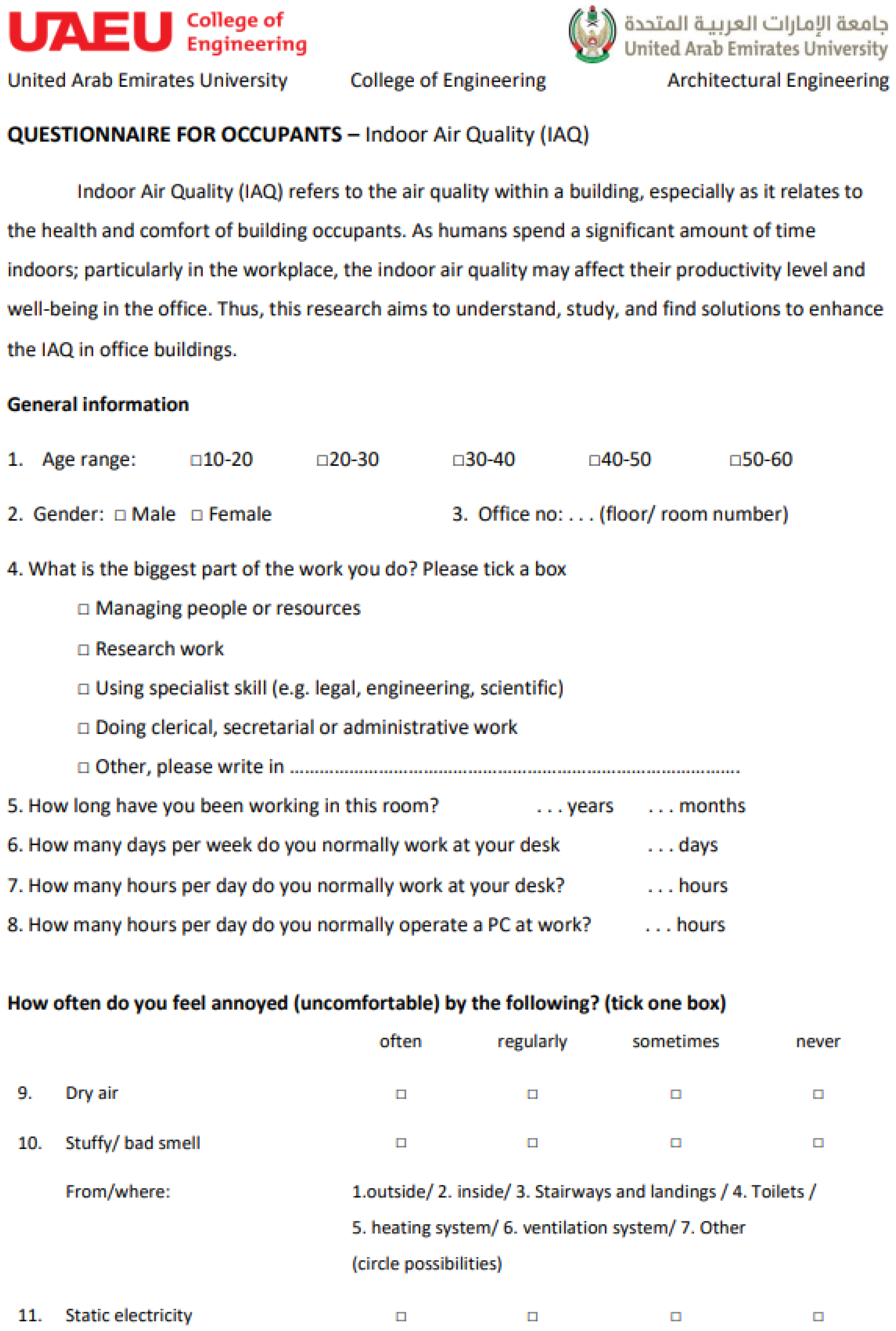
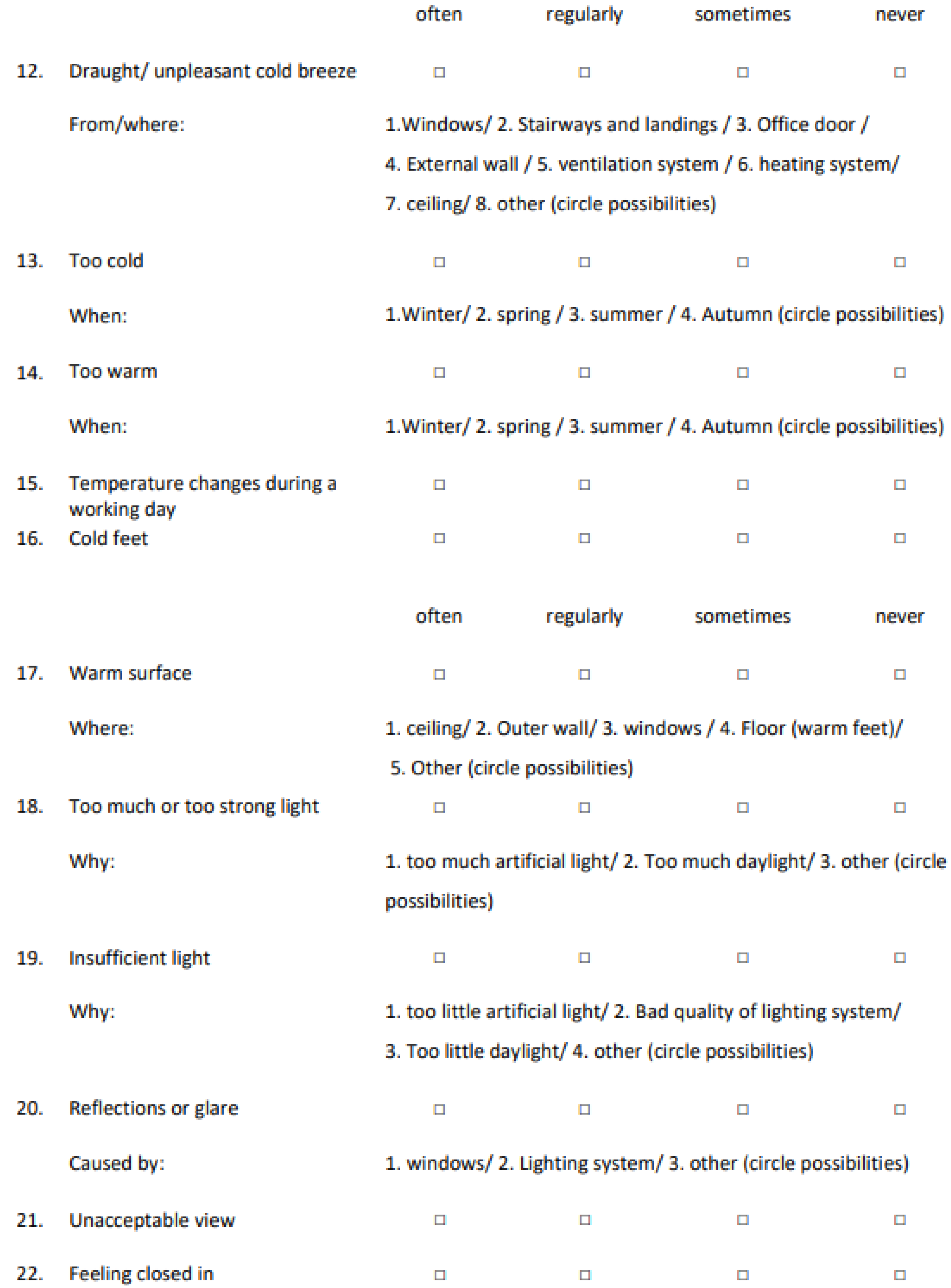
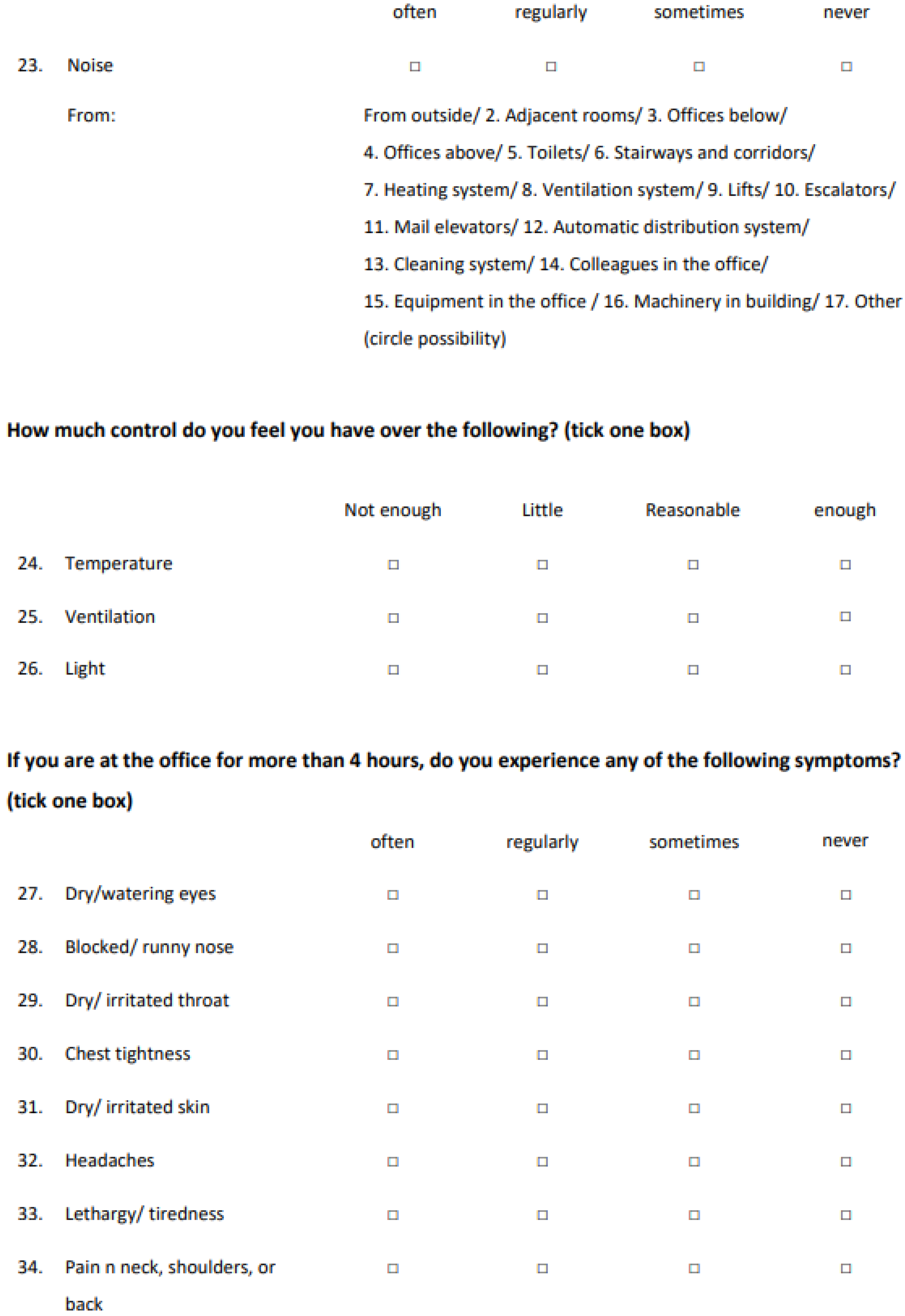

References
- Aries, M.B.C.; Bluyssen, P.M. Climate change consequences for the indoor environment. Heron 2009, 54, 49–70. [Google Scholar]
- De Sario, M.; Katsouyanni, K.; Michelozzi, P. Climate change, extreme weather events, air pollution and respiratory health in Europe. Eur. Respir. J. 2013, 42, 826–843. [Google Scholar] [CrossRef] [PubMed]
- Stott, P. How climate change affects extreme weather events. Science 2016, 352, 1517–1518. [Google Scholar] [CrossRef] [PubMed]
- Schenck, P.; Ahmed, A.K.; Bracker, A.; DeBernardo, R. Climate Change, Indoor Air Quality and Health; University of Connecticut Health Center, U.S. Environmental Protection Agency Office of Radiation and Indoor Air: Farmington, CT, USA, 2010.
- Orru, H.; Ebi, K.L.; Forsberg, B. The Interplay of Climate Change and Air Pollution on Health. Curr. Environ. Health Rep. 2017, 4, 504–513. [Google Scholar] [CrossRef]
- Kreiss, K. The epidemiology of building-related complaints and illness. Occup. Med. 1989, 4, 575–592. [Google Scholar]
- Weschler, C.J.; Shields, H.C.; Naik, D.V. Indoor Ozone Exposures. JAPCA 1989, 39, 1562–1568. [Google Scholar] [CrossRef]
- Al Horr, Y.; Arif, M.; Kaushik, A.; Mazroei, A.; Katafygiotou, M.; Elsarrag, E. Occupant productivity and office indoor environment quality: A review of the literature. Build. Environ. 2016, 105, 369–389. [Google Scholar] [CrossRef]
- Clements-Croome, D.; Baizhan, L. Productivity and indoor environment. Proc. Healthy Build. 2000, 1, 629–634. [Google Scholar]
- Newsham, G.; Brand, J.; Donnelly, C.; Veitch, J.; Aries, M.; Charles, K. Linking indoor environment conditions to job satisfaction: A field study. Build. Res. Inf. 2009, 37, 129–147. [Google Scholar] [CrossRef]
- Liang, H.-H.; Chen, C.-P.; Hwang, R.-L.; Shih, W.-M.; Lo, S.-C.; Liao, H.-Y. Satisfaction of occupants toward indoor environment quality of certified green office buildings in Taiwan. Build. Environ. 2014, 72, 232–242. [Google Scholar] [CrossRef]
- Council, A.D.U.P. The Pearl Rating System for Estidama. In Building Rating System: Design & Construction; Abu Dhabi Urban Planning Council: Abu Dhabi, United Arab Emirates, 2010. [Google Scholar]
- USGBC. LEED v4. In Building Design and Construction Addenda; USGBC: Washington, DC, USA, 2019. [Google Scholar]
- Hua, Y.; Göçer, K. Spatial mapping of occupant satisfaction and indoor environment quality in a LEED platinum campus building. Build. Environ. 2014, 79, 124–137. [Google Scholar] [CrossRef]
- Van Dronkelaar, C.; Dowson, M.; Burman, E.; Spataru, C.; Mumovic, D. A Review of the Regulatory Energy Performance Gap and Its Underlying Causes in Non-domestic Buildings. Front. Mech. Eng. 2016, 1, 17. [Google Scholar] [CrossRef]
- Menezes, A.C.; Cripps, A.; Bouchlaghem, D.; Buswell, R. Predicted vs. actual energy performance of non-domestic buildings: Using post-occupancy evaluation data to reduce the performance gap. Appl. Energy 2012, 97, 355–364. [Google Scholar] [CrossRef]
- Leitner, D.S.; Sotsek, N.C.; Santos, A.D.P.L. Postoccupancy Evaluation in Buildings: Systematic Literature Review. J. Perform. Constr. Facil. 2020, 34, 03119002. [Google Scholar] [CrossRef]
- Abdou, A.; Al Dghaimat, M. Post Occupancy Evaluation of Educational Buildings: A Case Study of a Private School in the UAE; United Arab Emirates University: Abu Dhabi, United Arab Emirates, 2016. [Google Scholar]
- Adamkiewicz, G.; World Health Organization. WHO Guidelines for Indoor Air Quality: Selected Pollutants; World Health Organization, Regional Office for Europe: Copenhagen, Denmark, 2010.
- Yassin, M.F.; Almouqatea, S. Assessment of airborne bacteria and fungi in an indoor and outdoor environment. Int. J. Environ. Sci. Technol. 2010, 7, 535–544. [Google Scholar] [CrossRef]
- Leung, D.Y.C. Outdoor-indoor air pollution in urban environment: Challenges and opportunity. Front. Environ. Sci. 2015, 2, 69. [Google Scholar] [CrossRef]
- Destaillats, H.; Maddalena, R.L.; Singer, B.C.; Hodgson, A.T.; McKone, T.E. Indoor pollutants emitted by office equipment: A review of reported data and information needs. Atmos. Environ. 2008, 42, 1371–1388. [Google Scholar] [CrossRef]
- Weschler, C.J. Changes in indoor pollutants since the 1950s. Atmos. Environ. 2009, 43, 153–169. [Google Scholar] [CrossRef]
- Cincinelli, A.; Martellini, T. Indoor Air Quality and Health; Multidisciplinary Digital Publishing Institute: Basel, Switzerland, 2017; p. 1286. [Google Scholar]
- Gunathilake, T.M.S.U.; Ching, Y.C.; Kadokami, K. An overview of organic contaminants in indoor dust, their health impact, geographical distribution and recent extraction/analysis methods. Environ. Geochem. Health 2022, 44, 677–713. [Google Scholar] [CrossRef] [PubMed]
- Finnegan, M.J.; Pickering, C.A.; Burge, P.S. The sick building syndrome: Prevalence studies. BMJ 1984, 289, 1573–1575. [Google Scholar] [CrossRef]
- Redlich, C.A.; Sparer, J.; Cullen, M.R. Sick-building syndrome. Lancet 1997, 349, 1013–1016. [Google Scholar] [CrossRef]
- Fisk, W.J.; Mirer, A.G.; Mendell, M.J. Quantitative relationship of sick building syndrome symptoms with ventilation rates. Indoor Air 2009, 19, 159–165. [Google Scholar] [CrossRef]
- Ghaffarianhoseini, A.; AlWaer, H.; Omrany, H.; Ghaffarianhoseini, A.; Alalouch, C.; Clements-Croome, D.; Tookey, J. Sick building syndrome: Are we doing enough? Archit. Sci. Rev. 2018, 61, 99–121. [Google Scholar] [CrossRef]
- Fanger, P.O. Indoor Air Quality in the 21st Century: Search for Excellence. Indoor Air 2000, 10, 68–73. [Google Scholar] [CrossRef]
- Candido, C.; Thomas, L.; Haddad, S.; Zhang, F.; Mackey, M.; Ye, W. Designing activity-based workspaces: Satisfaction, productivity and physical activity. Build. Res. Inf. 2018, 47, 275–289. [Google Scholar] [CrossRef]
- Geng, Y.; Ji, W.; Lin, B.; Zhu, Y. The impact of thermal environment on occupant IEQ perception and productivity. Build. Environ. 2017, 121, 158–167. [Google Scholar] [CrossRef]
- Pei, Z.; Lin, B.; Liu, Y.; Zhu, Y. Comparative study on the indoor environment quality of green office buildings in China with a long-term field measurement and investigation. Build. Environ. 2015, 84, 80–88. [Google Scholar] [CrossRef]
- Hwang, B.-G.; Zhu, L.; Ming, J.T.T. Factors Affecting Productivity in Green Building Construction Projects: The Case of Singapore. J. Manag. Eng. 2017, 33, 04016052. [Google Scholar] [CrossRef]
- Singh, A.; Syal, M.; Grady, S.C.; Korkmaz, S. Effects of Green Buildings on Employee Health and Productivity. Am. J. Public Health 2010, 100, 1665–1668. [Google Scholar] [CrossRef]
- Cena, K.; de Dear, R. Thermal comfort and behavioural strategies in office buildings located in a hot-arid climate. J. Therm. Biol. 2001, 26, 409–414. [Google Scholar] [CrossRef]
- Gamage, W.; Lau, S.S. Perception of indoor environment quality in differently ventilated workplaces in tropical monsoon climates. Procedia Eng. 2015, 118, 81–87. [Google Scholar] [CrossRef][Green Version]
- Daisey, J.M.; Angell, W.J.; Apte, M.G. Indoor air quality, ventilation and health symptoms in schools: An analysis of existing information. Indoor Air 2003, 13, 53–64. [Google Scholar] [CrossRef]
- Lee, J.Y.; Wargocki, P.; Chan, Y.H.; Chen, L.; Tham, K.W. Indoor environmental quality, occupant satisfaction, and acute building-related health symptoms in Green Mark-certified compared with non-certified office buildings. Indoor Air 2018, 29V, 112–129. [Google Scholar] [CrossRef]
- Abdou, A. Performance Evaluation of In Vitro Fertilization Unit in the UAE: The End User Perspective. In Proceedings of the 5th Annual International Conference on Architecture and Civil Engineering, Singapore, 8–9 May 2017. [Google Scholar]
- Zagreus, L.; Huizenga, C.; Arens, E.; Lehrer, D. Listening to the occupants: A Web-based indoor environmental quality survey. Indoor Air 2004, 14, 65–74. [Google Scholar] [CrossRef]
- Li, P.; Froese, T.M.; Brager, G. Post-occupancy evaluation: State-of-the-art analysis and state-of-the-practice review. Build. Environ. 2018, 133, 187–202. [Google Scholar] [CrossRef]
- Hadjri, K.; Crozier, C. Post-occupancy evaluation: Purpose, benefits and barriers. Facilities 2009, 27, 21–33. [Google Scholar] [CrossRef]
- Bluyssen, P.M. The Indoor Environment Handbook: How to Make Buildings Healthy and Comfortable; Earthscan: London, UK, 2009. [Google Scholar]
- Institute, I.W.B. WELL v2; International WELL Building Institute: New York, NY, USA, 2018. [Google Scholar]
- Lin, B.; Liu, Y.; Wang, Z.; Pei, Z.; Davies, M. Measured energy use and indoor environment quality in green office buildings in China. Energy Build. 2016, 129, 9–18. [Google Scholar] [CrossRef]
- Leaman, A.; Bordass, B. Strategies for Better Occupant Satisfaction. In Proceedings of the Fifth Indoor Air Quality Conference, London, UK, 10 July 1997; British Library: London, UK, 1997. [Google Scholar]
- Park, J.; Loftness, V.; Aziz, A. Post-Occupancy Evaluation and IEQ Measurements from 64 Office Buildings: Critical Factors and Thresholds for User Satisfaction on Thermal Quality. Buildings 2018, 8, 156. [Google Scholar] [CrossRef]
- Feige, A.; Wallbaum, H.; Janser, M.; Windlinger, L. Impact of sustainable office buildings on occupant’s comfort and productivity. J. Corp. Real Estate 2013, 15, 7–34. [Google Scholar] [CrossRef]

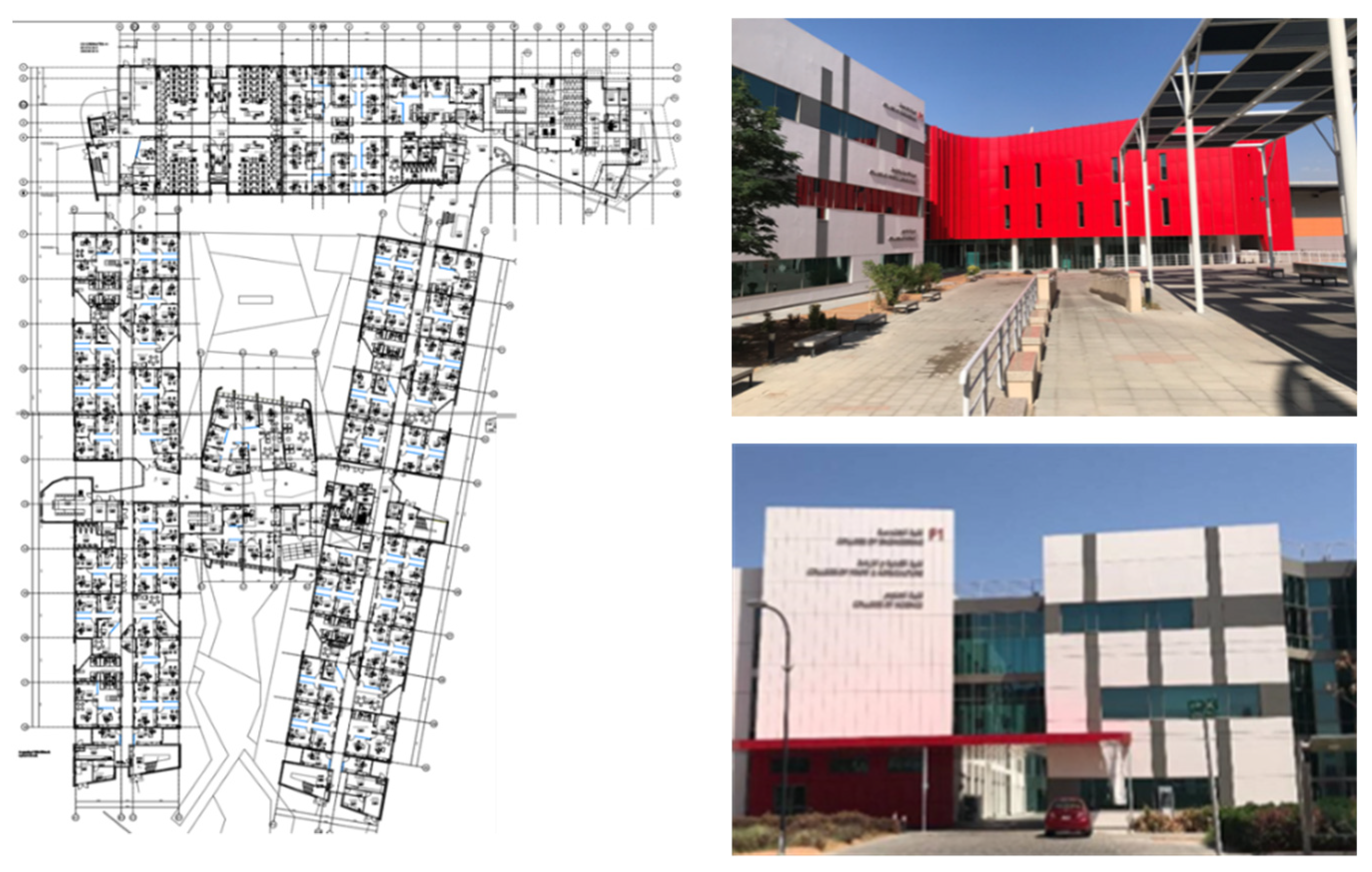
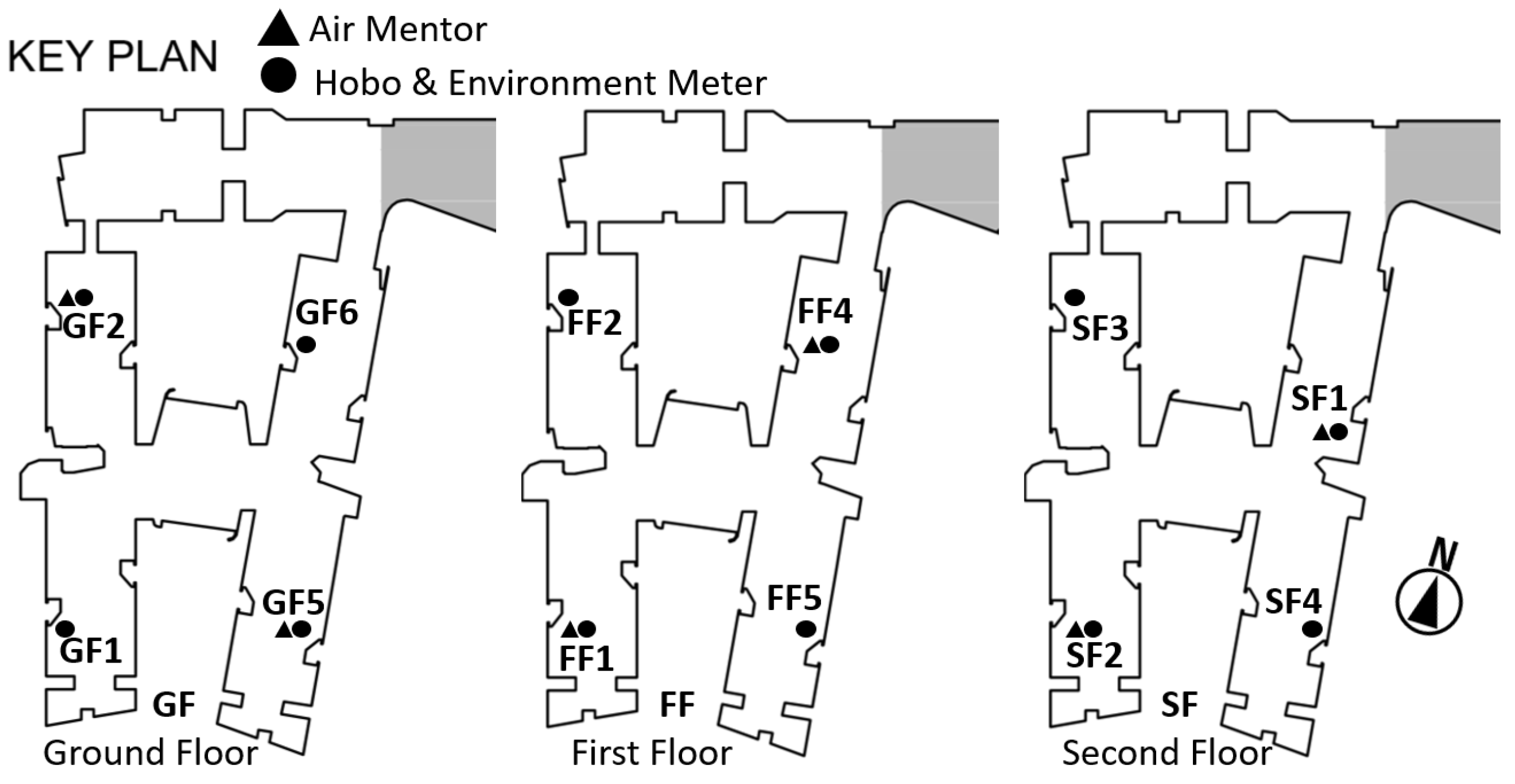
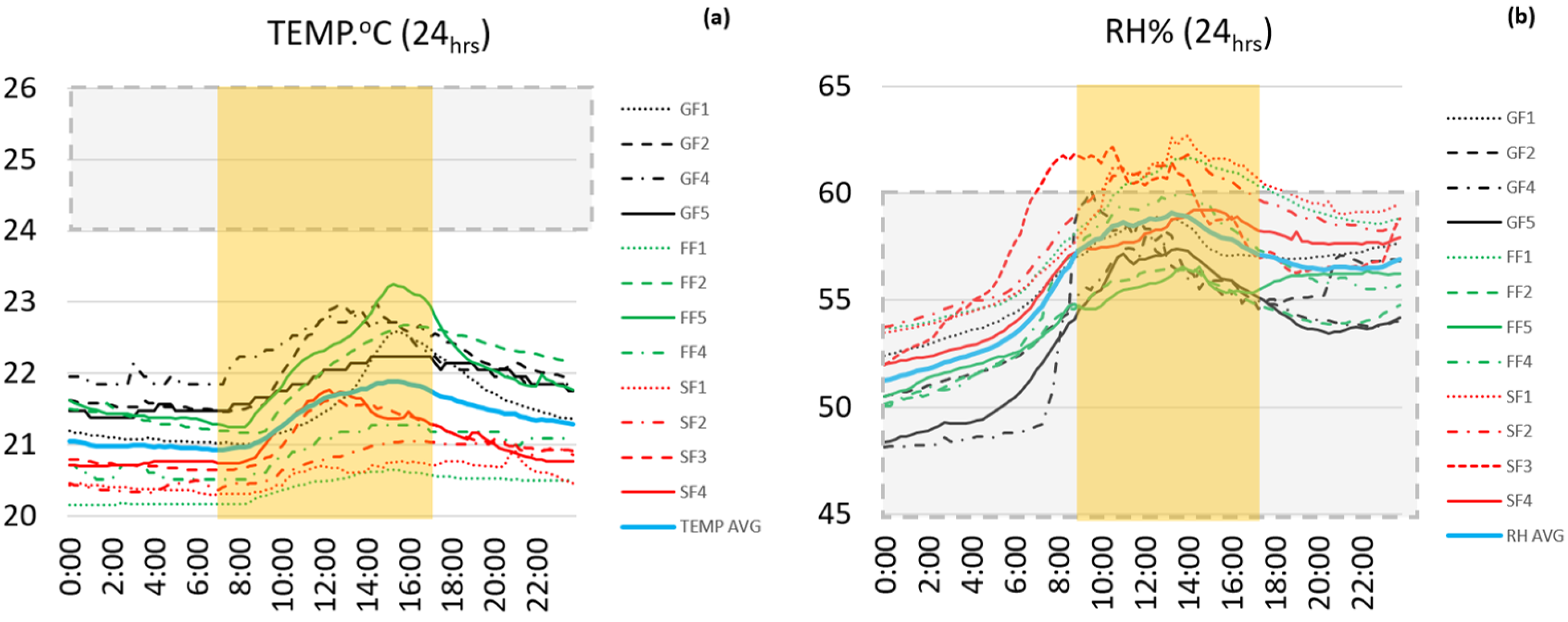
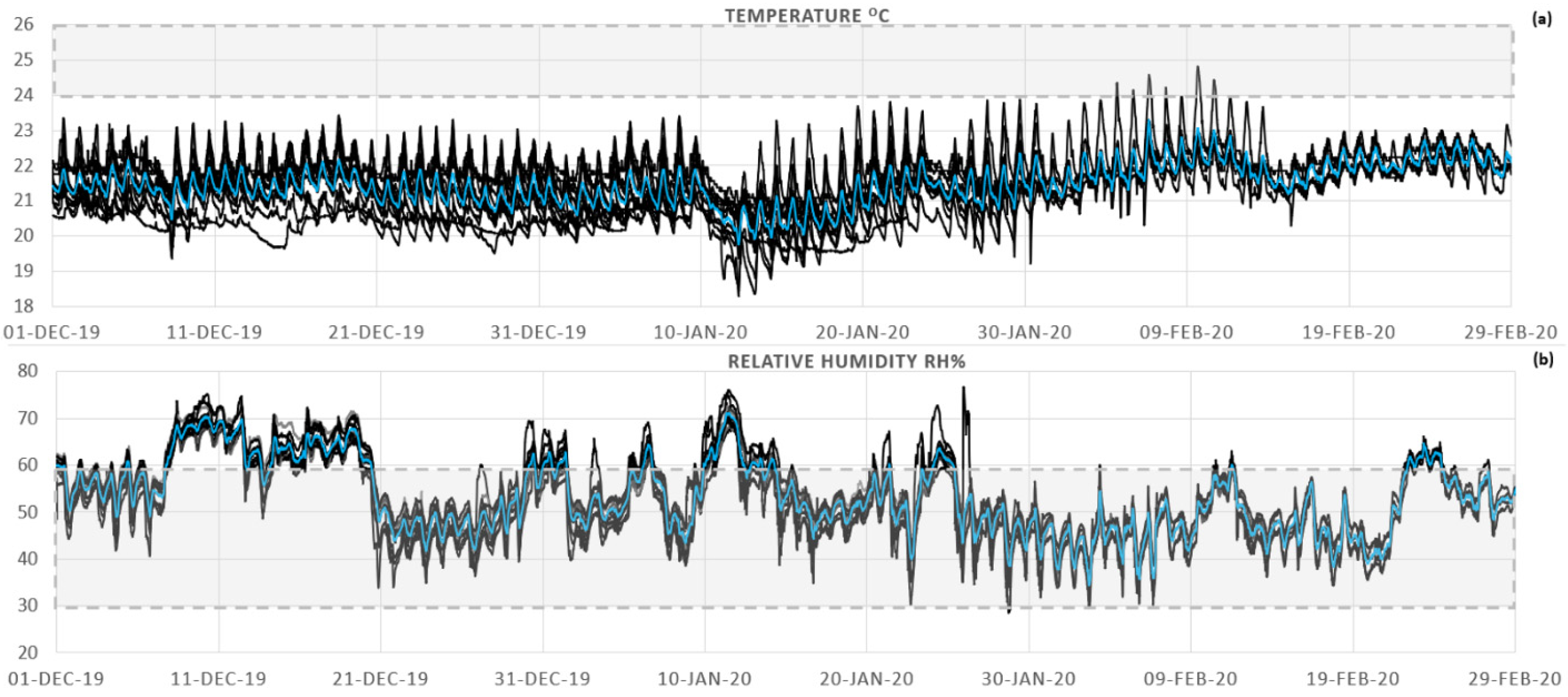
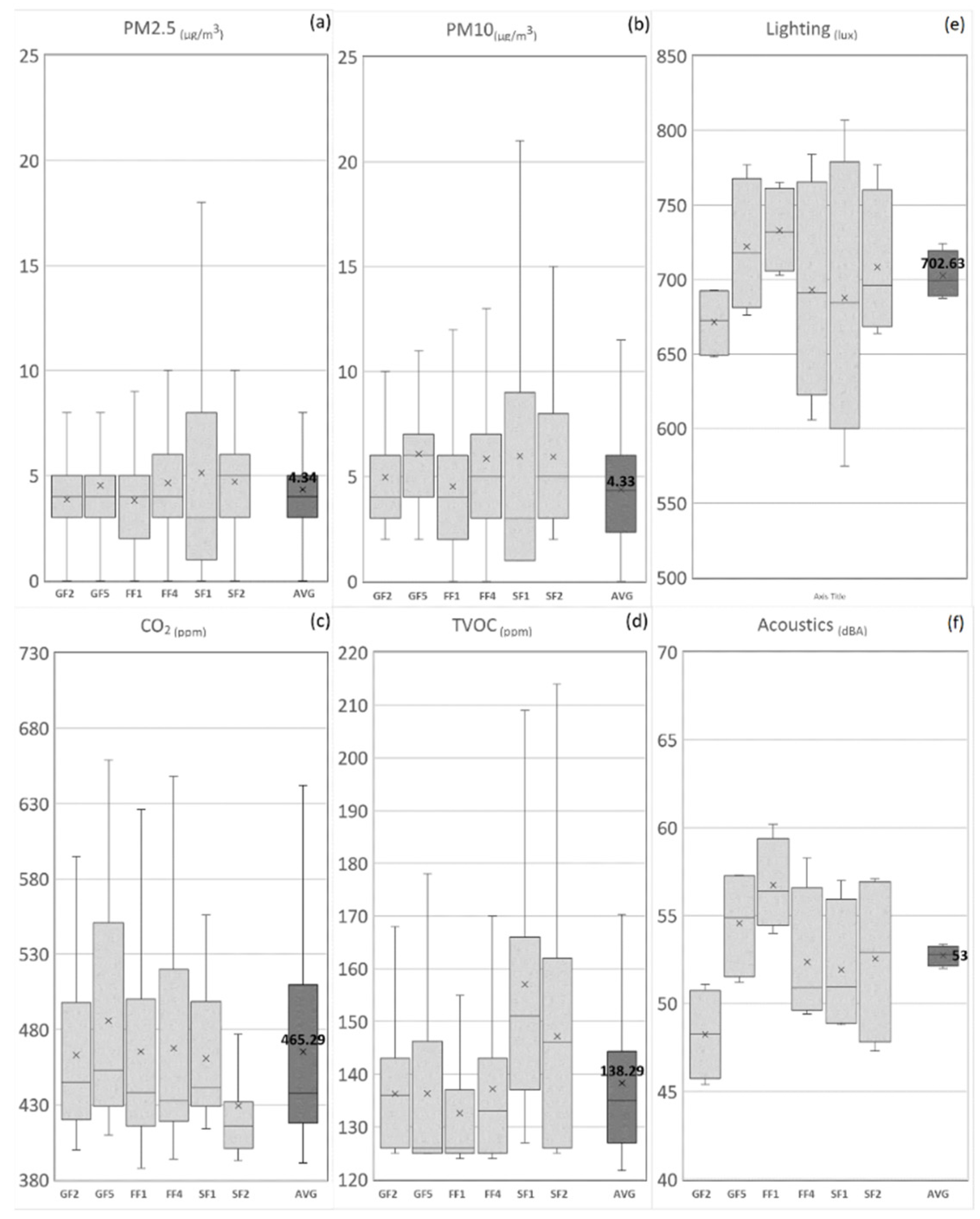
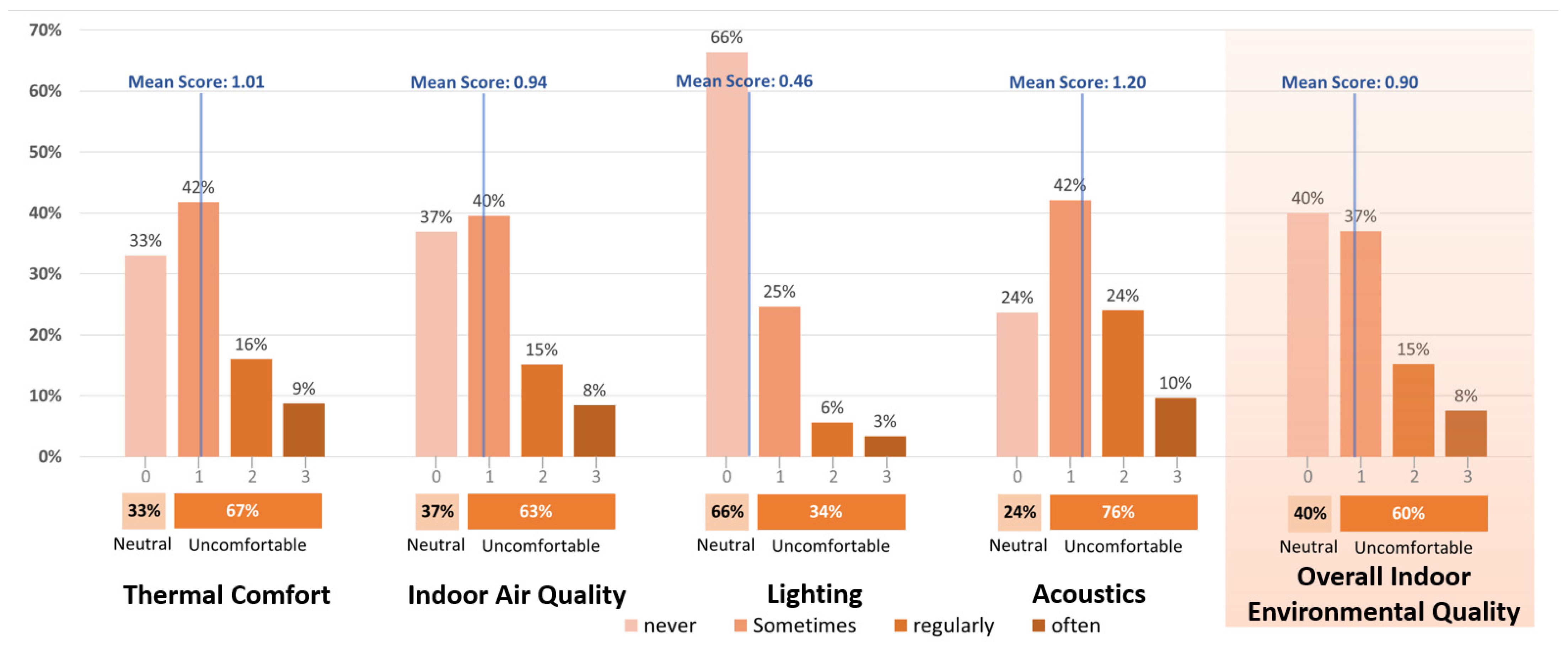
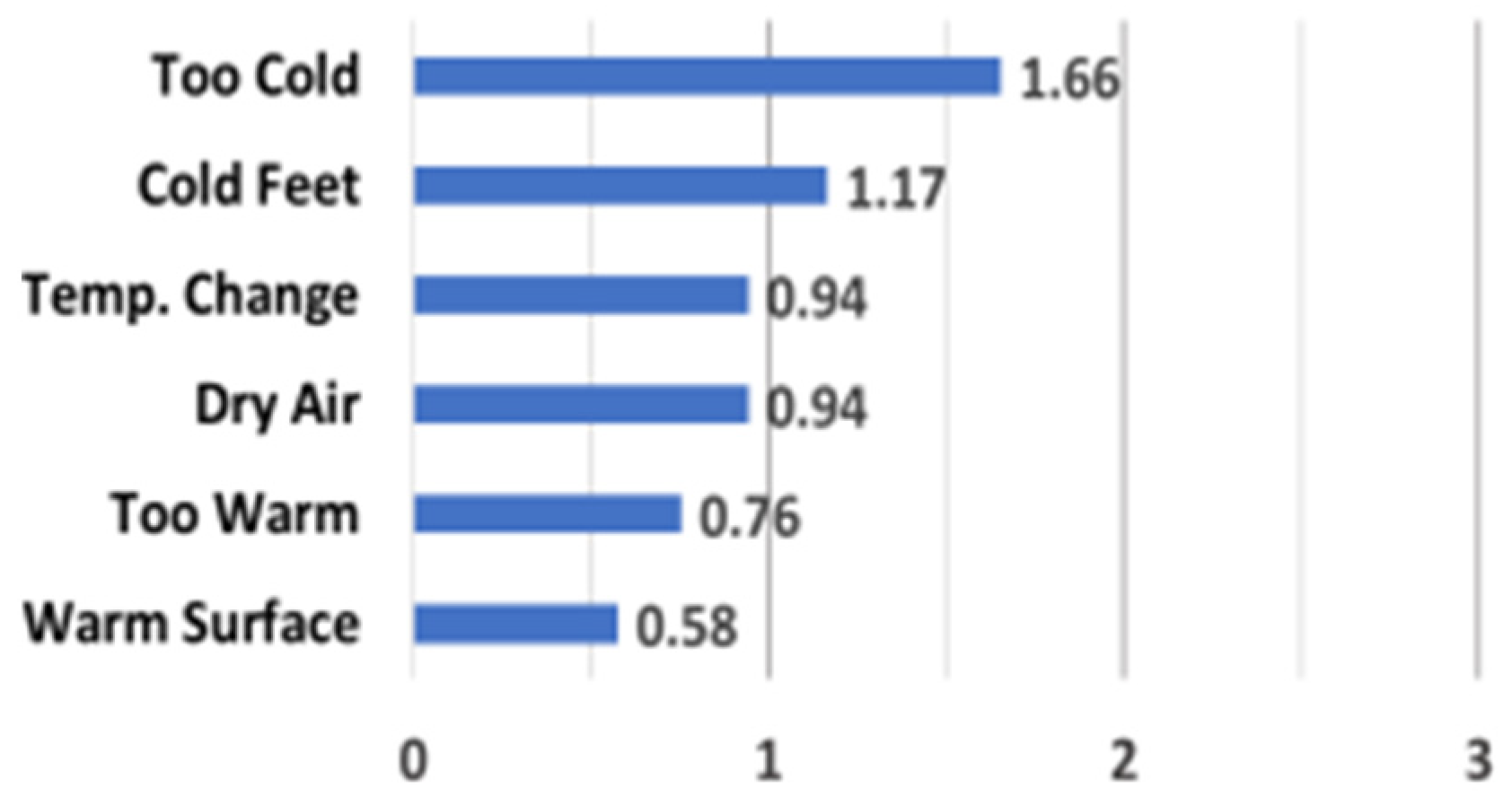

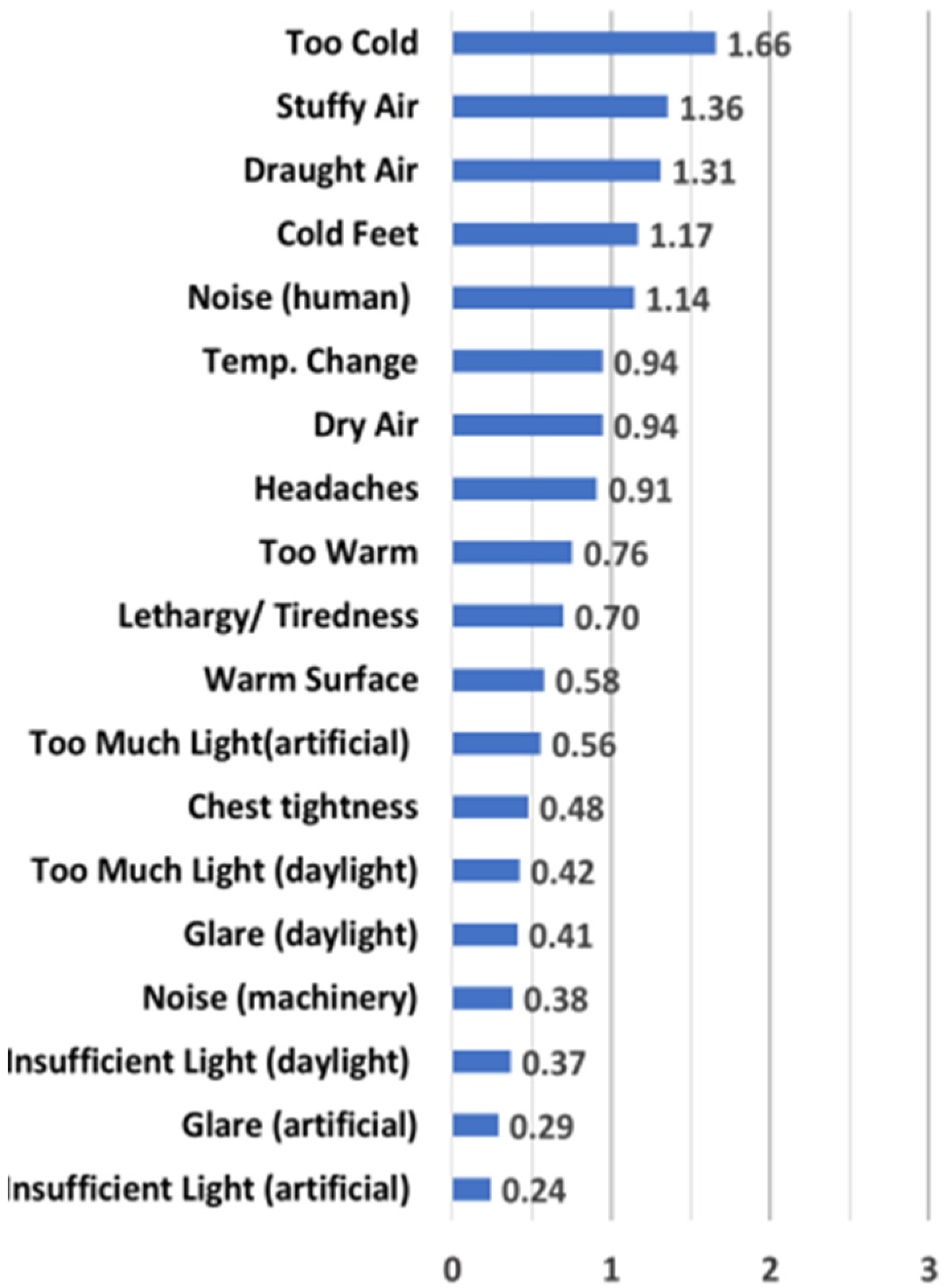
| Title of the Study | Region Studied | Study Focus | Key Findings | Year |
|---|---|---|---|---|
| Occupant productivity and office indoor environment quality. | - | Literature study. | The literature review shows both the economic and health related benefits of good IEQ. It illustrates the significance of the impact of the IEQ on occupant comfort and productivity. | 2016 [8] |
| Satisfaction of occupants toward indoor environment quality of certified green office buildings in Taiwan | Taiwan | A post-occupancy evaluation was employed in the study consisting of a field survey of subjective perception among indoor occupants and on-site environmental measurements. | The overall IEQ satisfaction was statistically significantly greater in the certified green building than the conventional buildings. However, a re-visit of thermal comfort-related criteria may be required. | 2014 [11] |
| Spatial mapping of occupant satisfaction and indoor environment quality in a LEED platinum campus building. | USA | POE approach with GIS-based spatial mapping method was used to analyse and visualize the survey results of building occupant satisfaction and the measured indoor environment quality. | Occupants complained regarding thermal comfort, reporting it was too cold. CO2 level was also predominantly higher. Light levels in the building were found to be higher than preferred as artificial lighting was excessively used even when daylight was available. | 2014 [14] |
| Patients and the sick building syndrome. | USA | Suggest physician approaches to identify disease in individual and group effects on patients and analyse the impact of indoor environmental exposure. | Sick building syndrome can show several recognizable symptoms that include eye irritation, nose irritation, throat irritation, headache, fatigue, asthma-like symptoms, and more. | 1994 [27] |
| Indoor Air Quality in the 21st Century: Search for Excellence. | - | Studies key principles for a new philosophy of excellence. | Improved indoor air quality increases productivity and decreases sick building syndrome symptoms. Individual control of the thermal environment should be provided to increase user comfort. | 2000 [30] |
| Comparative study on the indoor environment quality of green office buildings in China with a long-term field measurement and investigation. | China | This study analyses the subjective questionnaires and objective measurements of the indoor environment quality (IEQ) in green building. | Results show that the green buildings in China possess significantly higher IEQ satisfaction levels than conventional buildings. This emphasises the importance of operation management and individual control methods in the building. | 2015 [33] |
| Thermal comfort and behavioural strategies in office buildings located in a hot-arid climate. | Australia | The effects of indoor climate on thermal comfort levels and adaptive behaviour of office workers. | Shows office workers prefer adjusting the set temperature of the building to 22.21 °C for both seasons. As opposed to the ASHRAE scale, it occurred at 20.31 °C in winter. Further research can reduce overcooling cost with a positive effect on thermal comfort and workplace productivity. | 2001 [36] |
| Perception of indoor environment quality in differently ventilated workplaces in tropical monsoon climates. | Sri Lanka | The research investigates the perception of indoor environment quality (IEQ) in differently ventilated workspaces. | Air conditioning (AC) and ductless mini split system air conditioning (MM) buildings were rated more satisfactory than naturally ventilated (NV) systems for overall comfort of indoor environment conditions. | 2015 [37] |
| Indoor air quality, ventilation, and health symptoms in schools: An analysis of existing information | USA | investigates causal relationships between health symptoms and exposures to specific pollutants in schools | Reported ventilation and CO2 data strongly indicate that ventilation is inadequate in many classrooms, possibly leading to health symptoms. | 2003 [38] |
| Indoor environmental quality, occupant satisfaction, and acute building-related health symptoms in Green Mark-certified compared with non-certified office buildings | Singapore | This study compared IEQ performance in green and non-green office buildings. Adopting a cross-sectional study design between objective measurements and subjective measurements. | This study offered a positive association of green buildings with qualitatively and quantitatively measured performance of IEQ. | 2018 [39] |
| Listening to the occupants: a Web-based indoor environmental quality survey | - | Developing a benchmarking survey that can be used as a diagnostic tool to identify specific problems and their sources | The research discusses survey guidelines to create a feedback loop for building industry professionals, so that they can learn how various building design features and technologies affect occupant comfort, satisfaction and productivity. | 2004 [41] |
| Measured energy use and indoor environment quality in green office buildings in China. | China | Energy consumption and indoor environment quality (IEQ) are compared in green office buildings with common ones through energy data collection, physical parameters measurement and satisfaction survey. | User satisfaction in green buildings is statistically significantly higher than those in common buildings. Especially in the field of thermal environment, IAQ, facilities and operating & maintenance. | 2014 [44] |
| IEQ Factors | Parameters | Control Method | Issues | Parameter Measures | Threshold | Health Symptoms |
|---|---|---|---|---|---|---|
| Thermal Comfort | Temperature Relative humidity Air velocity User activity | Air conditioning system Building design | Adaptation Building integration Energy use | Temperature | 24–26 °C ** | Respiratory problems |
| Relative Humidity | 30–60% ** | Microbial growth, skin drying, irritation of mucus membranes, and dry eyes | ||||
| Indoor Air Quality | Pollution sources Ventilation rate and efficiency | Source control Ventilation system maintenance | Pollution Fine dust | PM2.5 | 15 µg/m3 * | Respiratory and cardiovascular diseases including asthma, myocardial ischemia, high blood pressure and heart disease |
| PM10 | 50 µg/m * | |||||
| CO2 | 800 ppm * | Increased risk of sick building syndrome and symptoms such as headache | ||||
| TVOCs | 312 ppb * | Dry throat, runny nose, asthma attacks, poisoning, and cancer | ||||
| Lighting Quality | Luminance Reflectance Colour, temperature View, and daylight | Luminance distribution Artificial lighting and daylighting integration | Daylight relation to thermal comfort Energy use | Lux level | 300–500 lux * | Headaches, circadian phase disruptions, breast cancer, sleep disorder, and depression |
| Acoustical Quality | Sound level Absorption Sound insulation Reverberation time | Acoustical control Passive noise control Active noise control | Vibrations and annoyance long term health effects | Sound level | 55 dBA * | Hypertension, stress, poor concentration, memory retention and mental arithmetic |
| Architecture | Site | P.O. BOX 15551, Al-Ain, UAE |
| Use | Office, labs, and lecture rooms | |
| Building area | 7120 m2 | |
| Gross floor area | 21,360 m2 | |
| Mechanical | Cooling | Campus district cooling |
| Air Handling Unit | 13 AHUs on the roof | |
| Control | VAV | |
| Electrical | Lighting | T5 flounce lamp (office) |
| Control | Wall switches on/off |
| IEQ Factor | Device | Image | Parameters Measured | Range | Accuracy | Measuring Intervals |
|---|---|---|---|---|---|---|
| Thermal Comfort | HOBO |  | Temperature Relative humidity | Temperature: −20 °C to 70 °C RH: 5% to 95% | Temperature: ±0.35 °C RH: ±2.5% | 15 min |
| IAQ | Air Mentor Pro |  | PM2.5 PM10 CO2 TVOCs | PM2.5 Range: 0~300 μg/m3 PM10 Range: 0~300 μg/m3 CO2 Range: 400~2000 PPM TVOC Range: 125~3500 PPB | N/A | 15 min |
| Lighting Quality | PRECISION GOLD Environment Meter |  | Lux level | Lux: 0 to 20,000 Lux | Lux: ±5% rdg +10 dgts | 15 min |
| Acoustical Quality | Sound level | Sound: 35 to 130 dB | Sound: ±3.5 dB | 15 min |
| Total (N) | Gender | Age Group | Job Description | ||||||
|---|---|---|---|---|---|---|---|---|---|
| M | F | 20–30 | 30–40 | 40–50 | Researcher | Postgrad Student | Specialist Engineer | Secretary | |
| 90 | 38 (42%) | 52 (58%) | 70 (78%) | 19 (21%) | 1 (1%) | 54 (60%) | 14 (16%) | 18 (20%) | 4 (4%) |
| IEQ Factors | Rank | Mean Score | Std. Deviation |
|---|---|---|---|
| Acoustical Quality | 1 | 1.20 | 0.92 |
| Thermal comfort | 2 | 1.01 | 0.92 |
| Indoor Air Quality | 3 | 0.94 | 0.91 |
| Lighting Quality | 4 | 0.46 | 0.74 |
| Overall IEQ | - | 0.90 | 0.92 |
| IEQ Factors | Parameter Measures | Threshold | % Measured above Threshold | Total Average | Discomfort Sources and Health Related Symptoms | % of Participants’ Reports | Overall Mean Score | Main Causes |
|---|---|---|---|---|---|---|---|---|
| Thermal Comfort | Temperature | 24–26 °C | 99% | 21.5 °C | too Cold | 55% | 1.10 | Facility Management and User Lack of Control |
| Too Warm | 19% | |||||||
| Temp. Change | 31% | |||||||
| Cold feet | 39% | |||||||
| Warm Surface | 25% | |||||||
| Runny Nose | 31% | |||||||
| RH% | 30–60% | 27% | 53% | Dry Air | 31% | |||
| Thermal Comfort | 23% | |||||||
| Dry/Watering eyes | 32% | |||||||
| Dry Skin | 34% | |||||||
| IAQ | PM2.5 | 15 µg/m3 | 1% | 4.34 µg/m3 | Chest tightness | 16% | 0.94 | HVAC Layout, and User Lack of Control |
| PM10 | 50 µg/m3 | 0.1% | 4.38 µg/m3 | Stuffy Air | 45% | |||
| CO2 | 800 ppm | 0% | 465.29 ppm | Headache | 30% | |||
| Lethargy/Tiredness | 23% | |||||||
| TVOCs | 312 ppb | 0% | 138.29 ppb | Dry/Watering eyes | 32% | |||
| Lighting Quality | Lux level | 300–500 lux | 100% | 702.63 lux | Too much light (daylight) | 14% | 0.46 | User Lack of Control and Layout |
| Insufficient light (daylight) | 12% | |||||||
| Too much light (artificial) | 19% | |||||||
| Insufficient light (artificial) | 8% | |||||||
| Reflection or glare (artificial) | 10% | |||||||
| Reflection or glare (daylight) | 14% | |||||||
| Acoustical Quality | Sound level | 55 dBA | 38% | 53 dBA | Noise (human) | 38% | 1.20 | Facility Management and Layout |
| Noise (machinery) | 13% |
Publisher’s Note: MDPI stays neutral with regard to jurisdictional claims in published maps and institutional affiliations. |
© 2022 by the authors. Licensee MDPI, Basel, Switzerland. This article is an open access article distributed under the terms and conditions of the Creative Commons Attribution (CC BY) license (https://creativecommons.org/licenses/by/4.0/).
Share and Cite
Kim, Y.K.; Abdou, Y.; Abdou, A.; Altan, H. Indoor Environmental Quality Assessment and Occupant Satisfaction: A Post-Occupancy Evaluation of a UAE University Office Building. Buildings 2022, 12, 986. https://doi.org/10.3390/buildings12070986
Kim YK, Abdou Y, Abdou A, Altan H. Indoor Environmental Quality Assessment and Occupant Satisfaction: A Post-Occupancy Evaluation of a UAE University Office Building. Buildings. 2022; 12(7):986. https://doi.org/10.3390/buildings12070986
Chicago/Turabian StyleKim, Young Ki, Yasmin Abdou, Alaa Abdou, and Hasim Altan. 2022. "Indoor Environmental Quality Assessment and Occupant Satisfaction: A Post-Occupancy Evaluation of a UAE University Office Building" Buildings 12, no. 7: 986. https://doi.org/10.3390/buildings12070986
APA StyleKim, Y. K., Abdou, Y., Abdou, A., & Altan, H. (2022). Indoor Environmental Quality Assessment and Occupant Satisfaction: A Post-Occupancy Evaluation of a UAE University Office Building. Buildings, 12(7), 986. https://doi.org/10.3390/buildings12070986









